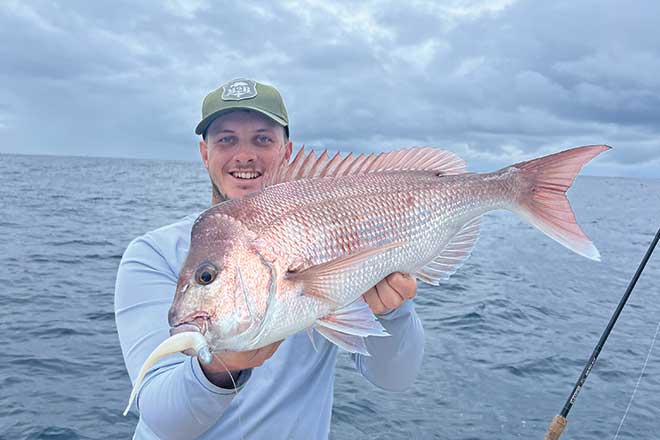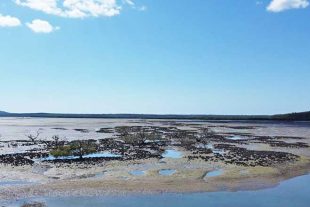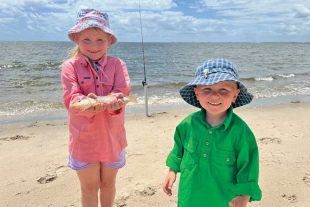With snapper season in full swing, we have nice cold frosty mornings out on the water.
At this time of the year, whales, dolphins and turtles are in massive numbers, creating an amazing day on the water when fishing.
Seeing colossal whales jumping, waving and having a good time always entertains a fisho.
So, to the fishing part of the article… this is hands down my favourite part of the year.
Sending a nicely presented bait or lure to the bottom to hook up to an abundant array of species, from snapper, pearl perch, jewfish and many more.
Off the Gold Coast, you can find snapper anywhere – from in 10m of water, all the way out past 100m.
Near the many reefs off the Seaway, including Diamond, Casino and the 24, 36 and 50 fathom reefs, you will find snapper and many other species that you can target.
And the reefs off Tweed Heads, including Fido’s, Ballast Rock (Mud Hole), Wonder (10-minute mark) and Nine Mile, make for some prime fishing spots for all species.
The hardest thing about snapper fishing is finding them.
This can test the patience and focus of many a fisho.
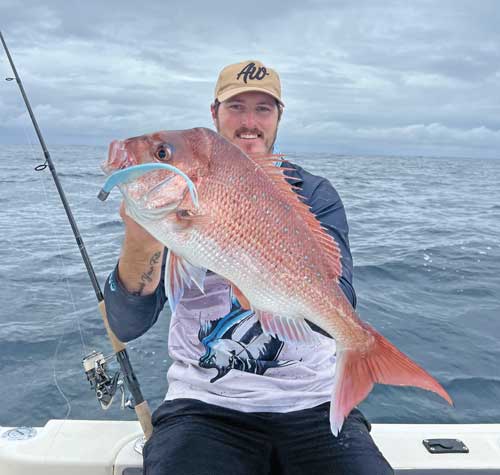
You could be driving around for a few minutes to possibly over an hour to find a school of snapper to fish.
Large rocks, ledges or even flat ground with growth are many places to find snapper holding.
In one of the pictures I’ve included, you can see the flat ground with a good amount of bait holding tightly and a school of snapper sitting around 5-10m above.
This creates the perfect scenario to drop a well-presented bait or lure straight into them and hook up.
When snapper mark up like this, I’ve found they’re feeding and will hit pretty much anything you put down.
Hooking up to fish comes down to many things – from how the bait looks, to making sure your bait isn’t twisted or has any strange hanging parts.
A cut up strip of mullet fillet is a great example.
If the fillet presents flat and straight with the hooks down the middle, it will float down and look a lot better than a mangled piece that has been thrown on.
A number of bait options are available to use for snapper – pilchard being a very popular choice, with squid, yakka, slimies, bonito fillet ticking the boxes as well… there are simply too many to list.
So, how much lead is too much?

You want your bait to float down slowly enough that it looks more natural and gives the fish a chance to eat.
As opposed to having a big 8 ball sinker while float lining, dropping straight to the bottom and not catching a single thing, other than a rock cod or the bottom itself.
I’ve found that when fishing in about 40m, a 3-5 ball sinker is the best, given how much current is flowing.
If you drop your bait down and get hit right away, you’ve nailed and executed the bait and size of lead perfectly.
If you’ve gone straight to the bottom, you have too much lead, and if you didn’t get anywhere near the bottom, you don’t have enough.
Though, it could also mean the school of fish may not be feeding at that point of the day, so an idea is to mark where you have found the fish and possibly hit the mark up again later in the day, or when you go out on the next trip.
Getting the drift right when float lining can be a tricky job.
Accounting for the wind and current to push you in the right direction can take a few drifts to get right, but as I’ve said before, once you have perfected it, the fish will be climbing all over your baits.
While I’m snapper fishing, I like to run straight monofilament on either a spinning reel or a small overhead, such as a Shimano Talica 8.
And 30lb will cover you for everything in the shallows and out to the 50-fathom line.
A set of ganged hooks or snell is perfect for your fishing.
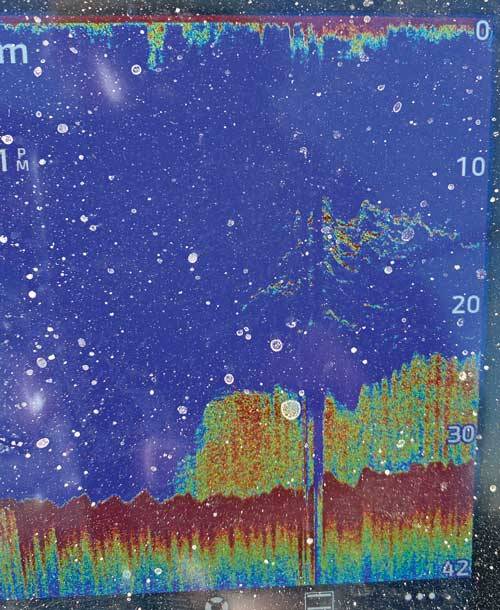
Dropping 7” soft plastics can create an amazing snapper session in the shallow and deep water.
The shallower the water, the less weight you need.
In 30m of water, a 3/8 jig head is the perfect weight to drop your plastic down, with the snapper climbing over the slow falling baitfish imitation lure.
Out wider in about 60m of water, I tend to change over to a 1oz jig head.
It still gives you the best chance of getting snapper mid-water column or on the bottom with the lure sinking down at a nice slow rate, and running a 30lb leader, you’ll be giving yourself the best chance at landing any species that hit your lure.
In Queensland, there’s a snapper and pearl perch closure that runs from July 15 to August 15 every year.
This is to allow the fish to breed without being interrupted and creates a lifelong cycle of fish for all of us fishos to enjoy.
While the closure is on, it’s a great opportunity to target different species, ranging from kingfish, cobia, jewfish, venus tuskfish and all species out deep past the 150m mark.
With winter, the currents out wider die off, giving everyone the opportunity to push that extra bit wider and get into some tasty fish.
In late August, snapper fishing really starts to ramp up, with the larger models showing up from the depths and larger schools finding their way to shallower water.
I hope this gives you an insight on the basics of snapper fishing.
Until next time… tight lines.
 Bush ‘n Beach Fishing Magazine Location reports & tips for fishing, boating, camping, kayaking, 4WDing in Queensland and Northern NSW
Bush ‘n Beach Fishing Magazine Location reports & tips for fishing, boating, camping, kayaking, 4WDing in Queensland and Northern NSW

